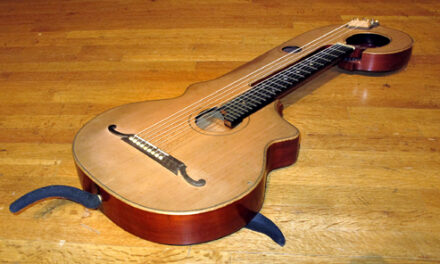I started to finally work up a blog on the very interesting visit to the Yale University Collection of Musical Instruments that a few of us were able to take in during the week of HGG9. I had been waiting on photos and specs from the staff (which I got a month or more ago). I’ll do the Yale blog next. In preparation, I first added some of these instruments to their respective Gallery pages, and took the opportunity to add some important new information on several related instruments. This includes research and findings over months or years that I finally got around to (thanks to Benoit for his help on this as well). None of these are specifically harp guitars, per se, but wonderful historical sidebars. In no particular order:

I’ve been meaning to update the Bissex entry for a couple of years, ever since Steve Sedgwick sent me an interesting new Naderman image. But it was only a few months ago, after obtaining an article in the 1974 Lute Society of America Journal, that I discovered that most of us have had the tuning of the bissex wrong! Then just last year, Ben and I helped to identify (or re-I.D.) a third bissex specimen at the Paris museum, while also noting that no one had ever bothered to properly count the sharping levers! All I need now is a copy of the Naderman Bissex Methode (if anyone can help). Pretty interesting stuff, all of which is now updated on the Hybrids page.

On the same page, same row, I also updated the entry on the unusual Caron instrument, including both known specimens (one we just inspected at Yale). Strange hybrids indeed!

Another Yale specimen is this wonderful triple-neck guitar, which Ben and I were anxious to examine (more later). I’ve added it to the Harpolyre page (as that’s what it was identified as, until now), with more information on the Multi-neck Gallery page.
Finally, we were able to study the remarkable “French Lyre” below and I was able to ascertain for the first time what the string length is! Amazingly, no researcher or museum has ever noted this information. Looking at it in person, with its very short scale, I was again struck how anyone could possibly mistake this curious invention for a “lyre guitar,” as many continue to do. Read my updated professional rant on my tedious French Lyres & Lyre Guitars page.

Thanks to the staff at the Yale University Collection of Musical Instruments. Here’s the next installment.
Photos: Alex Contreras © Yale University Collection of Musical Instruments






Very interesting and beautiful – especially the last one. I might make a tenor lyre uke with a floating fingerboard.
Michael